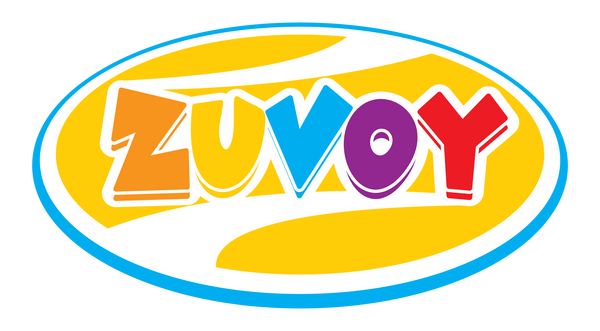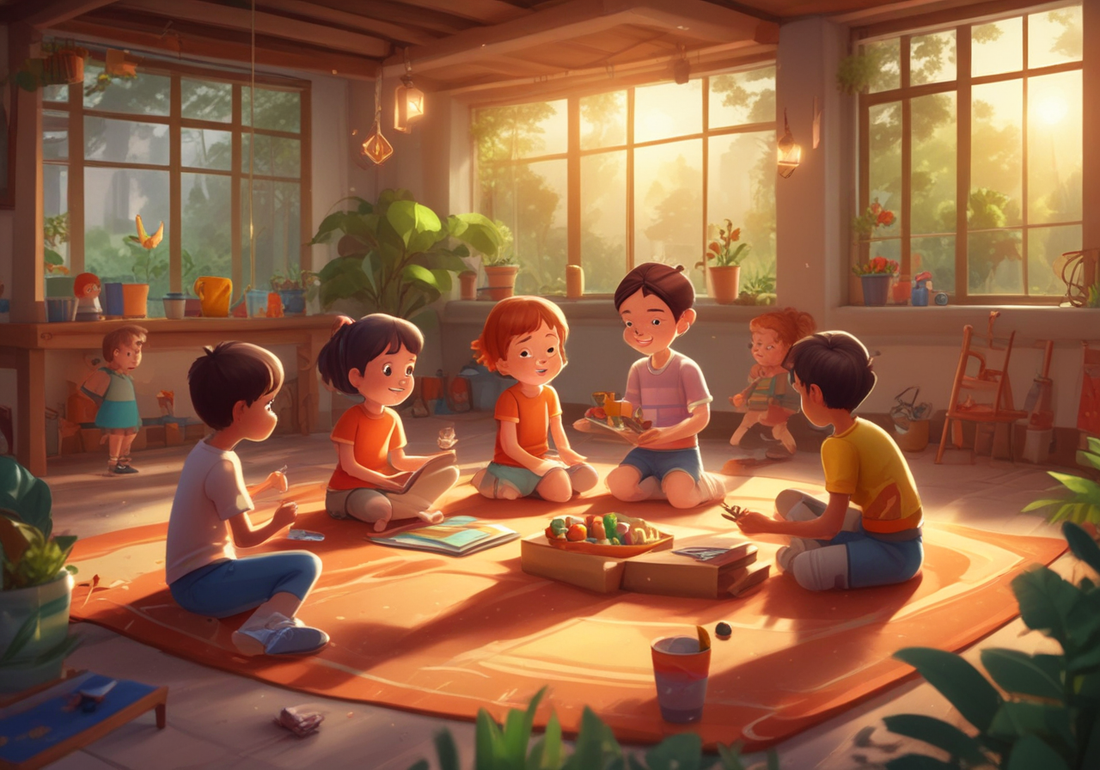Key Highlights
- Discover fun ideas that transform the learning process into a playful experience for kids of all ages.
- Explore creative strategies that nurture a lifelong love for different subjects, from math to reading and beyond.
- Build a supportive learning environment using hands-on activities, outdoor adventures, and technology.
- Encourage group work and teamwork through collaborative projects and friendly competition.
- Learn the importance of adapting lessons for diverse learners and age groups to teach important skills.
- Find group work opportunities that boost social skills and critical thinking in everyday routines.
Introduction
Children thrive when learning feels like an adventure, not a chore. Creating a positive learning environment is a great way to spark a lifelong love for new topics and skills. By making lessons exciting and playful—whether at school or home—you help kids connect deeply with the learning process. Are you wondering, “What are some creative ways to make learning more enjoyable for kids at home?” Read on for practical, joyful ideas that will inspire you to turn everyday moments into memorable learning opportunities.
Creative Ways to Make Learning Fun for Kids

Making learning enjoyable is a fun way to help kids grasp different subjects and build confidence along the way. Simple shifts, such as turning lessons into games or exploring the outdoors, can turn any learning environment into a place where curiosity thrives. Even at home, you can create playful routines and activities that fit seamlessly into your child’s day.
Looking for inspiration? This section will answer questions like, “Can you suggest fun and interactive activities to help kids engage with educational topics?” and “How can I incorporate play-based learning into my child’s daily routine?” Let’s explore some proven ideas next.
1. Turn Lessons into Interactive Games
Engaging kids with interactive games is a fun way to teach academic skills and boost motivation. Friendly competition and props can transform traditional lessons into memorable experiences, while group work fosters deeper understanding and a sense of belonging.
Try these strategies for making learning fun:
- Use flashcards, board games, or online quizzes to review vocabulary or math facts.
- Incorporate props like dice, letter tiles, or jacks to build excitement around problem solving.
- Organize group work challenges, such as spelling bees or math races, to spur teamwork and friendly competition.
- Rotate roles within small groups, so each child gets a chance to lead or explain answers.
Games make difficult subjects, like math or reading, approachable. Remember, short bursts of game-based activities throughout the day keep the learning process lively and help kids retain information. As Dr. Jane Goodall put it, “What you do makes a difference, and you have to decide what kind of difference you want to make.”
2. Explore Outdoor Learning Adventures
Taking learning outside opens up new ways to teach important skills while encouraging movement, curiosity, and teamwork. The natural world can become a hands-on classroom, helping kids develop social skills and a sense of wonder.
Here are some fun ideas for outdoor learning:
- Set up a nature scavenger hunt focused on math skills, such as counting leaves or measuring sticks with chalk.
- Try group sports or games that require teamwork, like relay races or friendly competition in hopscotch.
- Use storytelling time under a tree to spark creativity and language skills.
- Encourage children to collect items for science dioramas or art projects, blending subjects in a dynamic way.
Allowing kids to move, explore, and learn in outdoor settings makes every lesson more memorable. Outdoor adventures are a fantastic way to build confidence, independence, and a lifelong love for learning.
3. Use Hands-On DIY Projects and Crafts
DIY projects and crafts are a fantastic way to make the learning process active and engaging. These hands-on experiences appeal to different ages and allow kids to express their creativity while picking up important skills.
Consider these new ways to bring learning to life:
- Organize a letter-sound scavenger hunt or create ABC hopscotch with chalk for language skills.
- Build fraction pizzas from paper plates for math fun or make pattern bracelets to teach sequencing.
- Encourage children to create their own storybooks, dioramas, or collage sentences for storytelling and critical thinking.
- Use simple household materials for science experiments, such as vinegar and baking soda reactions.
Hands-on projects keep kids focused and excited. “Tell me and I forget, teach me and I may remember, involve me and I learn,” said Benjamin Franklin. Projects and crafts lay the foundation for deeper understanding and a stronger connection to new topics.
4. Integrate Technology and Educational Apps
Technology, when used thoughtfully, is a powerful tool for making learning fun and accessible. Educational apps can reinforce vocabulary, math skills, and more—turning screen time into skill-building moments.
Bring technology into your child’s learning environment in these ways:
- Download vocabulary and math apps that adapt to your child’s skill level, making each lesson feel like a new challenge.
- Use interactive e-books, story apps, or online games to support reading and comprehension skills.
- Encourage your child to explore science or art with virtual field trips or creative apps.
- Set time for educational video clips or digital storytelling to complement hands-on activities.
By weaving technology into the daily learning process, you can support different subjects and styles. Apps and digital resources are fun ideas for keeping your child engaged while helping them develop important 21st-century skills.
5. Encourage Group Activities and Collaborative Challenges
Collaborative challenges and group work can turn learning into a social, energizing experience. These activities help children build social skills, practice teamwork, and develop critical thinking as they solve problems together.
Try these group-based fun ideas:
- Organize small group science experiments or math challenges, allowing friendly competition to motivate participation.
- Set up storytelling circles where each child adds to the story, fostering creativity and language skills.
- Use cooperative games or building projects that require students to share roles and responsibilities.
- Encourage reflective group discussions after the activity, helping learners process new ways to approach tasks.
When kids work together, they learn the value of teamwork and communication. Group activities create a supportive learning environment and make each lesson more meaningful, preparing children for real-world collaboration.
Tips for Tailoring Fun Learning to Different Ages and Styles

Every child is unique—what excites one learner may not interest another. Adapting activities for different ages and learning styles unlocks new ways to teach important skills and keep kids engaged across different subjects. Younger children may love tactile crafts, while older ones thrive with group work or technology-based challenges.
It’s vital to observe how your child responds to various approaches and introduce fun ideas that match their interests and needs. Next, let’s look at how to adapt activities for specific age groups and learning styles.
Adapt Activities for Various Age Groups
Meeting children where they are developmentally can make learning more effective. Tailor your approach to their age by using familiar props, age-appropriate challenges, and plenty of encouragement. Here’s a practical text table to guide your planning:
|
Age Group |
Math Skills & Activities |
Language/Storytelling |
Hands-On Fun |
Team/Group Work |
|---|---|---|---|---|
|
Preschool (3-5) |
Count with blocks, chalk hopscotch |
Story stones, puppet shows |
Sensory bins, collage art |
Simple sharing games |
|
Early Elementary (6-8) |
Pattern bracelets, fraction pizza |
DIY storybooks, vocabulary treasure hunt |
Easy science experiments |
Relay races, ABC hopscotch |
|
Tweens (9-12) |
DIY board games, number puzzles |
Storytelling charades, group book clubs |
Dioramas, science models |
Collaborative challenges |
Adapting tools and instructions keeps each child interested. Using familiar games like jacks for math or storytelling for language skills ensures lessons are memorable and fun for every learner.
Embrace Different Learning Styles with Custom Approaches
Children absorb knowledge best when lessons match their preferred learning environment and styles. It’s important to use a variety of fun ideas across different subjects to help all learners thrive.
Consider these approaches:
- Visual learners benefit from colorful props, diagrams, and crafts.
- Kinesthetic learners excel with movement-based games, chalk or hands-on activities that keep them active.
- Auditory learners enjoy group discussions, songs, and storytelling sessions for language skills and vocabulary building.
- Social learners thrive with group work, collaborative assignments, and friendly competition.
Mixing and matching these methods will help you discover new ways to motivate your child. Custom approaches encourage children to explore, question, and express themselves in ways that feel natural and exciting to them.
Conclusion
In conclusion, making learning enjoyable for kids is essential for fostering a love of education and encouraging lifelong curiosity. By incorporating interactive games, outdoor adventures, and hands-on projects, parents can create a dynamic learning environment tailored to their children's individual needs. Additionally, considering age appropriateness and diverse learning styles ensures that every child remains engaged and motivated. Remember, the key is to blend fun with education, allowing your child to explore new concepts joyfully. If you're looking for more personalized strategies or tips, don't hesitate to reach out for a free consultation to help your child's learning journey.
Frequently Asked Questions
How can parents make subjects like math or reading more enjoyable at home?
Making math fun is easy with games, props, and interactive apps. Use dice, jacks, or story-based challenges to teach math skills and vocabulary. Educational apps and playful activities turn difficult subjects into a fun way to learn, helping your child develop a positive attitude.
What are some examples of play-based learning activities for kids?
Play-based learning can include group work games like relay races or hopscotch, scavenger hunts, or friendly competition in jacks. These fun ideas introduce new ways to learn math, language, and teamwork, making each lesson exciting and interactive.
How can I keep my child motivated and engaged in daily learning?
A dynamic learning process uses powerful tools such as hands-on activities, technology, and critical thinking challenges. Creating a supportive learning environment, offering choices, and using a great way—like rotating games or collaborative projects—helps keep motivation high and learning enjoyable every day.

